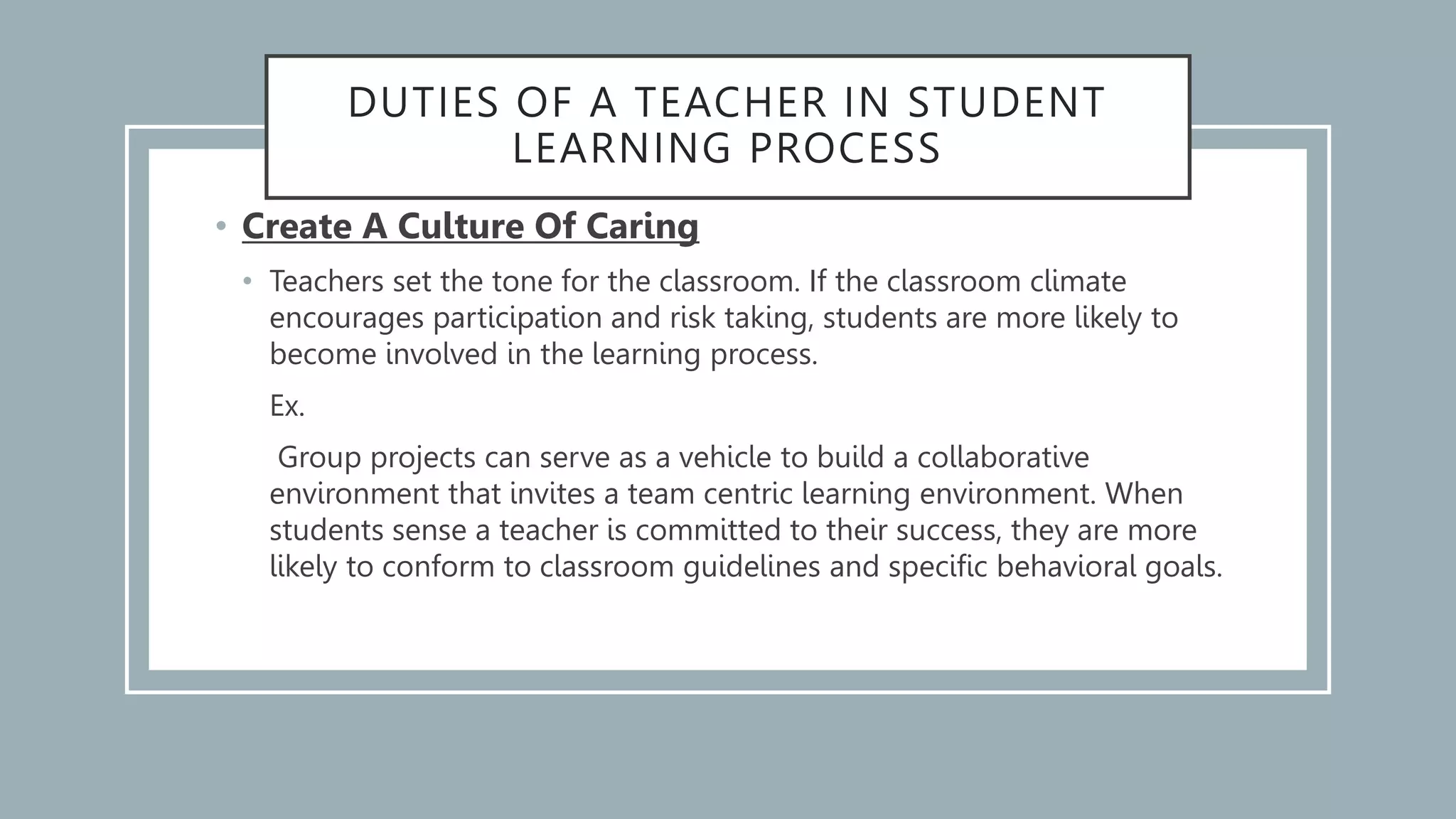The document discusses the roles of teachers and learners in the learning process. It defines a teacher as someone who facilitates learning and guides students, while a learner is an active participant willing to gain new knowledge. The learning process is described as active, building on prior knowledge through social environments, authentic contexts, and requiring motivation. Key aspects of the teacher's role include creating a caring environment, establishing rules, maintaining accountability, and managing problems. Characteristics of good learners are that they lead their own learning and engage with the world. The document outlines various learning theories and models.



























